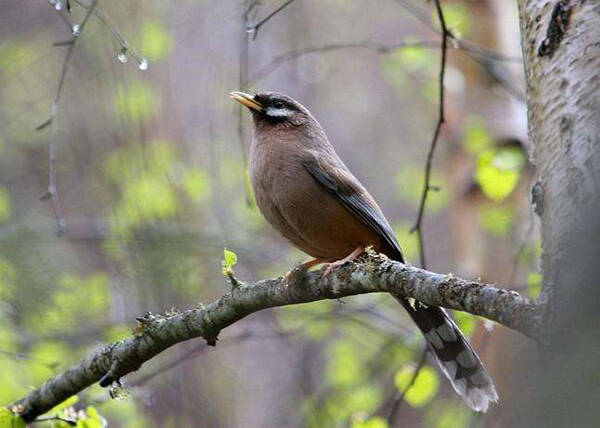Garrulax sukatschewi
IUCN
LCBasic Information
Scientific classification
- name:Garrulax sukatschewi
- Scientific Name:Garrulax sukatschewi,Snowy-cheeked Laughingthrush
- Outline:Songbird
- Family:Passeriformes Ophiura
Vital signs
- length:27-31cm
- Weight:No verification information
- lifetime:No verification information
Feature
The cheek and ear feathers are white with black eye and zygomatic stripes, which are very eye-catching on the light-colored head. The nose feathers are black and cover the forehead, hence the name.
Distribution and Habitat
The Black-fronted Laughingthrush is a bird endemic to China, and is only found in southwestern, southern, and southeastern Gansu, as well as Nanping and Pingwu in northern Sichuan.
The Black-fronted Laughingthrush mainly inhabits alpine shrubs and bamboo forests, as well as subalpine coniferous forests and mixed coniferous and broad-leaved forests, and secondarily in areas with well-developed understory shrubs and bamboo thickets. [1] It is mainly found in fir forests, especially in areas with dwarf bamboo or shrubs under the forest.
Appearance
Male and female plumage is similar. The upper body is olive brown or grayish brown, and the top of the head is darker. The eyebrow is light brown, long from the forehead to the side of the occipital and not obvious. The nose feathers are black, with black eye and zygomatic stripes. The front of the cheeks and ear feathers are white, and the back of the ear feathers is grape brown. The inner coverts on the wings are the same color as the back. The outer vanes of the winglets are smoky gray, the inner vanes are dark brown, the primary coverts are dark gray, the great coverts are light brown, and there are brown spots on the feather tips. The outer vanes of the primary flight feathers are slate gray, the inner vanes are dark brown, and the feather edges are light brown. The secondary flight feathers are mostly dark brown, the outer vanes are lighter, and all the flight feathers have white end spots, and the white end spots of the flight feathers are larger the further they are inward. The
Details
Snowy-cheeked Laughingthrush, no subspecies.

Black-cheeked Laughingthrush often moves in pairs, mostly foraging in the leaf litter and moss under the forest. Male and female birds stay together all year round, and almost always move in the moss and dry leaves under the forest, never leaving the forest. They often roost in trees at night and are good at singing, especially at dusk, when the male and female birds often sing loudly to each other, with pleasant and varied singing. When singing, their heads often swing from side to side rhythmically, and they occasionally lift their tails and raise their feathers.
The black-fronted mountain laughingthrush mainly feeds on insects such as beetles, lepidoptera larvae, flies, and also eats plant fruits and seeds.
The breeding season of the black-fronted mountain laughingthrush is from May to July. It builds a nest on shrubs or in bamboo groves. The nest is bowl-shaped and 3 eggs are laid in each nest.
According to a detailed analysis by Bird Life International in 2001, the number of mature individuals of the Black-fronted Laughingthrush was estimated at 2,500-9,999, which concluded that the total population of the Black-fronted Laughingthrush is probably small, i.e. less than 10,000 individuals. This estimate is equivalent to 3,750-14,999 individuals.
The main threat to the Black-fronted Laughingthrush is probably forest loss and fragmentation. Since the late 1960s, forest cover in Sichuan has declined rapidly, mainly due to logging, land reclamation and grazing, and it is presumed that most of the temperate forest has disappeared.
Listed in the IUCN Red List of Threatened Species (IUCN 2016 ver 3.1) - Vulnerable (VU).
Listed in the World Endangered Bird List by Bird Life International.
Listed in the "National List of Terrestrial Wildlife with Important Economic and Scientific Research Value" (item 484) issued by the State Forestry Administration of China on August 1, 2000.
Listed in China's "National Key Protected Wildlife List" (February 5, 2021) Level 1.
Protect wildlife and eliminate game.
Maintaining ecological balance is everyone's responsibility!








